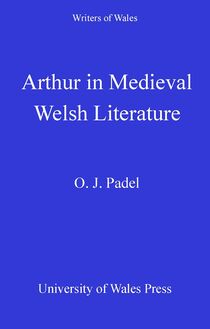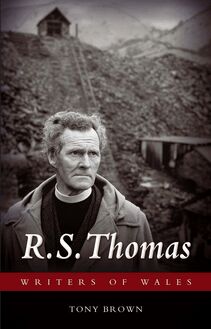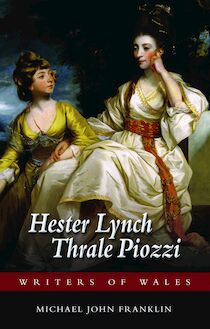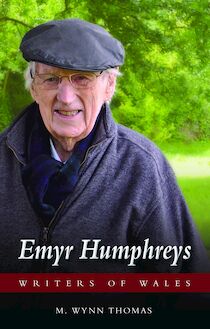-
 Univers
Univers
-
 Ebooks
Ebooks
-
 Livres audio
Livres audio
-
 Presse
Presse
-
 Podcasts
Podcasts
-
 BD
BD
-
 Documents
Documents
-
- Cours
- Révisions
- Ressources pédagogiques
- Sciences de l’éducation
- Manuels scolaires
- Langues
- Travaux de classe
- Annales de BEP
- Etudes supérieures
- Maternelle et primaire
- Fiches de lecture
- Orientation scolaire
- Méthodologie
- Corrigés de devoir
- Annales d’examens et concours
- Annales du bac
- Annales du brevet
- Rapports de stage
La lecture à portée de main
Vous pourrez modifier la taille du texte de cet ouvrage
Découvre YouScribe en t'inscrivant gratuitement
Je m'inscrisDécouvre YouScribe en t'inscrivant gratuitement
Je m'inscrisEn savoir plus
Vous pourrez modifier la taille du texte de cet ouvrage
En savoir plus

Description
Sujets
Informations
| Publié par | University of Wales Press |
| Date de parution | 15 septembre 2013 |
| Nombre de lectures | 0 |
| EAN13 | 9781783165773 |
| Langue | English |
Informations légales : prix de location à la page 0,0500€. Cette information est donnée uniquement à titre indicatif conformément à la législation en vigueur.
Extrait
Writers of Wales
Gwenlyn Parry
Editors:
Meic Stephens
Jane Aaron
M. Wynn Thomas
Honorary Series Editor:
R. Brinley Jones
Other titles in the Writers of Wales series:
Welsh Periodicals in English 1882–2012 (2013), Malcolm Ballin
Ruth Bidgood (2012), Matthew Jarvis
Dorothy Edwards (2011), Claire Flay
Kate Roberts (2011), Katie Gramich
Geoffrey of Monmouth (2010), Karen Jankulak
Herbert Williams (2010), Phil Carradice
Rhys Davies (2009), Huw Osborne
R. S. Thomas (2006), Tony Brown
Ben Bowen (2003), T. Robin Chapman
James Kitchener Davies (2002), M. Wynn Thomas
Writers of Wales
Gwenlyn Parry
Roger Owen
© Roger Owen, 2013
All rights reserved. No part of this book may be reproduced in any material form (including photocopying or storing it in any medium by electronic means and whether or not transiently or incidentally to some other use of this publication) without the written permission of the copyright owner except in accordance with the provisions of the Copyright, Designs and Patents Act 1988. Applications for the copyright owner’s written permission to reproduce any part of this publication should be addressed to the University of Wales Press, 10 ColumbusWalk, Brigantine Place, Cardiff CF10 4UP.
www.uwp.co.uk
British Library Cataloguing-in-Publication Data
A catalogue record for this book is available from the British Library.
ISBN 978-0-7083-2662-6
e-ISBN 978-1-78316-577-3
The right of Roger Owen to be identified as author of this work has been asserted by him in accordance with sections 77, 78 and 79 of the Copyright, Designs and Patents Act 1988.
The publisher acknowledges the financial support of the Welsh Books Council.
Cover image: Gwenlyn Parry © National Library of Wales, Julian Sheppard collection
To Sally, with all my love
Contents
Acknowledgements
List of illustrations
Introduction
1 ‘Llanbabo it is to us and Llanbabo it will remain’: Early Life
2 ‘God help me, I cannot escape from this’: Three Short Plays
3 ‘A kind of self-therapy’: Saer Doliau
4 ‘A revolution . . . where one man takes over the empire of the other’: Tŷ ar y Tywod
5 ‘A Welsh Tom and Jerry’: Fo a Fe and Y Ffin
6 ‘In the middle of the seventies experience’: Pobol y Cwm and Grand Slam
7 ‘They will also argue and fight and talk about their fear of death etc.’: Y Tŵr
8 ‘You know who’s in the balance?’: Sal
9 ‘Any bloody fool can play dame’: Panto
10 ‘Everything will be fine now, you’ll see’: Later Life
Postscript
Notes
Select Bibliography
Acknowledgements
I am indebted to several members of Gwenlyn Parry’s family for their help and kind co-operation while researching this book, for their generosity in showing photographs from their own collections and for providing permission for their reproduction here. I am particularly grateful to Joye Evans Parry and Ann Beynon in this respect: without their support and assistance, many aspects of the work would have been impossible. I also received valuable help from Sian Elin Parry and Llynwen Griffith.
A number of Gwenlyn’s close colleagues played an important role in forming my overview of his work and character, and it is my great pleasure to thank them for their perceptive comments and for the great value that they placed on their memories of Gwenlyn: particularly Meredydd Evans, Sion Eirian, Meic Povey, John Ogwen and Maureen Rhys. I am also grateful to Lyn T. Jones, T. James Jones and Endaf Emlyn for their willingness to contribute. During the latter stages of correcting and proofreading the drafts of this book, John Hefin, one of Gwenlyn’s closest colleagues and friends over many years, passed away. His contribution to this account of Gwenlyn’s life, through his many collaborations with Gwenlyn, through his editorship of the irreverent Grand Slam: Behind the Scenes of the Classic Film , his beautifully observed tribute television documentary, Cofio Gwenlyn , and his deeply insightful interviews, was invaluable. He was, in addition, a wonderfully warm and generous human being. One had to do very little more than talk to John to understand the kind of respect and deep affection that Gwenlyn inspired in his long-term colleagues, and the thoroughgoing passion for life which underpinned their professional collaboration. I am also very grateful to John’s wife and my Aberystwyth colleague, Elin Hefin, for her keen and witty observations on John and Gwenlyn’s working relationship.
I was greatly aided by the advice, encouragement and patience of the staff at the University of Wales Press, including Professor M. Wynn Thomas for his comments on the draft, to Sarah Lewis, Siân Chapman and particularly to Dr Angharad Watkins. I also very gratefully acknowledge the assistance of staff at the National Library of Wales in Aberystwyth and at the Gwynedd Archive Service in Caernarfon, particularly Annwen Jones.
I am also indebted to my colleagues and to former colleagues at the Department of Theatre, Film and Television Studies, especially to Professors Hazel Walford Davies and Elan Closs Stephens. Publication of this volume was aided by a grant from Aberystwyth University’s Sir David Hughes Parry Fund, which I gladly acknowledge.
Finally, I have received a great deal of love and support from my own family, particularly Sally, Eluned and Rhianedd, who have indulged me throughout; and from Eddie Ladd and Andre Stitt, who have made trips to Cardiff unreasonably comfortable.
In order to ensure a consistency of tone I have translated all quotations from interviews conducted in Welsh, and from Welsh critical studies and articles, and accept full responsibility for any errors, skewed emphases or misappropriation of facts. Quotes from Gwenlyn Parry’s plays and interviews are also my translations, unless otherwise stated; and I gratefully acknowledge the permission granted by Ann Beynon to include these in the present study.
Illustrations
1 Gwenlyn as a child, with his favourite beret, 1930s. © Private collection of Ann Beynon.
2 Gwenlyn as a teenager, sporting his St John’s Ambulance hat. © Private collection of Ann Beynon.
3 The Parry family reunited after the war. © Private collection of Ann Beynon.
4 Brynrefail school football team, 1950. Gwenlyn is in the front row, left. © Private collection of Ann Beynon.
5 Gwenlyn following his call-up to the RAF, 1950. © Private collection of Sian Elin Parry and Joye Evans Parry.
6 Gwenlyn with Joye at the Newborough Arms, Caernarfon, in the early 1960s. © Private collection of Sian Elin Parry and Joye Evans Parry.
7 Publicity still for Cwmni Theatr Cymru’s production of Saer Doliau , 1966. David Lyn as the Saer is menaced by the newly installed machinery. Photograph by Julian Sheppard. © By permission of Cymdeithas Theatr Cymru/Gwynedd Archive Services.
8 Gwenlyn engaged in political action, late 1960s. The photograph was mocked up by his friends Ifan Parry and HuwLloyd Edwards. © Private collection of Sian Elin Parry and Joye Evans Parry.
9 At home with daughters Sian and Catrin, early 1970s. © Private collection of Sian Elin Parry and Joye Evans Parry.
10 Still from the BBC television production of Un Dau Tri , May 1972. Clive Roberts as Bili Puw on trial as a ‘Conshi’. Details of photographer unavailable. © By kind permission of BBC Cymru Wales.
11 Rehearsal for Cwmni Theatr Cymru’s production of Y Tŵr , 1978. David Lyn (centre, background) directing Maureen Rhys and John Ogwen. © By permission of Cymdeithas Theatr Cymru/Gwynedd Archive Services
12 Hard at work with his great friend Rhydderch Jones, late 1970s. © Private collection of Sian Elin Parry and Joye Evans Parry.
13 Siwan Jones in the title role of Cwmni Theatr Cymru’s production of Sal , 1980. © By permission of Cymdeithas Theatr Cymru/Gwynedd Archive Services.
14 Cwmni Theatr Cymru’s controversial production of Tŷ ar y Tywod , 1983. The Man of the House (Geraint Lewis) dances, while the ‘Passion-Dummy’ (Nia Caron) and the ‘Mother- Dummy’ (Rhian Morgan) look on. © By permission of Cymdeithas Theatr Cymru/Gwynedd Archive Services.
15 Gwenlyn and Ann’s wedding day, 1986. © Private collection of Ann Beynon.
16 On holiday with children Marged and Gruffydd, 1990. © Private collection of Ann Beynon.
Introduction
Y Tŵr [‘The tower’], Gwenlyn Parry’s most highly regarded stage play, shows us a Man and a Woman going through their lives enclosed within the walls of a Tower. The Tower has four floors, which correspond to four phases in life: infancy and childhood, adolescence and youth, middle age, and finally old age and death. We are not privy to the events on the ground floor, but join the action at the point where the characters move up into adolescence and sexual maturity. Thereafter, during the three acts of the play, we watch them live out their relationship on successive floors of the Tower, where they make love, quarrel, reconcile, and try to find solace in each other’s company. At the climax of the play, on the very top floor, the Old Man dies, and the Old Woman waits alone for her own end, fascinated and appalled by the brevity of the life which has passed her by.
However, the action does not quite end there. Her husband suddenly arises from his deathbed and is transformed back into a younger version of himself – the Young Man who was seen in Act I. He calls upon his wife to join him on his journey up the final flight of stairs, out through the very roof of the Tower. His resurrection appears to promise a life hereafter, saving the play from its despairing denouement. But there is a further twist. The Old Woman does not respond to his entreaties. She appears not to have heard him directly; his words may have been a mere reiteration of things said in youth, his appearance possibly an apparition or a memory. He disappears. However, at the very last, she is gently cheered by the sound of a train in the distance. The travails of her life conclude in a moment of ambiguous joy.
Y Tŵr i
-
 Univers
Univers
-
 Ebooks
Ebooks
-
 Livres audio
Livres audio
-
 Presse
Presse
-
 Podcasts
Podcasts
-
 BD
BD
-
 Documents
Documents
-
Jeunesse
-
Littérature
-
Ressources professionnelles
-
Santé et bien-être
-
Savoirs
-
Education
-
Loisirs et hobbies
-
Art, musique et cinéma
-
Actualité et débat de société
-
Jeunesse
-
Littérature
-
Ressources professionnelles
-
Santé et bien-être
-
Savoirs
-
Education
-
Loisirs et hobbies
-
Art, musique et cinéma
-
Actualité et débat de société
-
Actualités
-
Lifestyle
-
Presse jeunesse
-
Presse professionnelle
-
Pratique
-
Presse sportive
-
Presse internationale
-
Culture & Médias
-
Action et Aventures
-
Science-fiction et Fantasy
-
Société
-
Jeunesse
-
Littérature
-
Ressources professionnelles
-
Santé et bien-être
-
Savoirs
-
Education
-
Loisirs et hobbies
-
Art, musique et cinéma
-
Actualité et débat de société
- Cours
- Révisions
- Ressources pédagogiques
- Sciences de l’éducation
- Manuels scolaires
- Langues
- Travaux de classe
- Annales de BEP
- Etudes supérieures
- Maternelle et primaire
- Fiches de lecture
- Orientation scolaire
- Méthodologie
- Corrigés de devoir
- Annales d’examens et concours
- Annales du bac
- Annales du brevet
- Rapports de stage




















